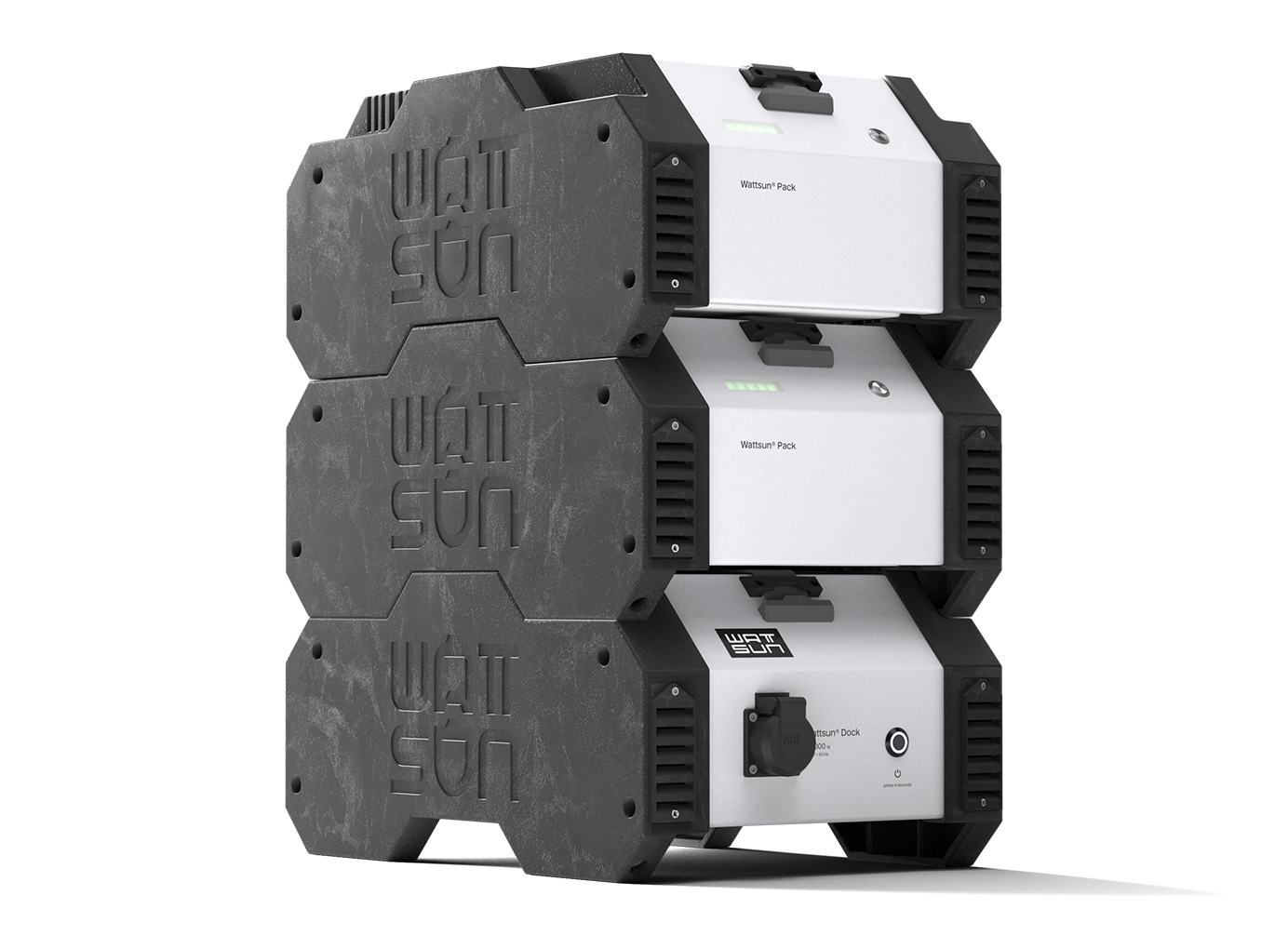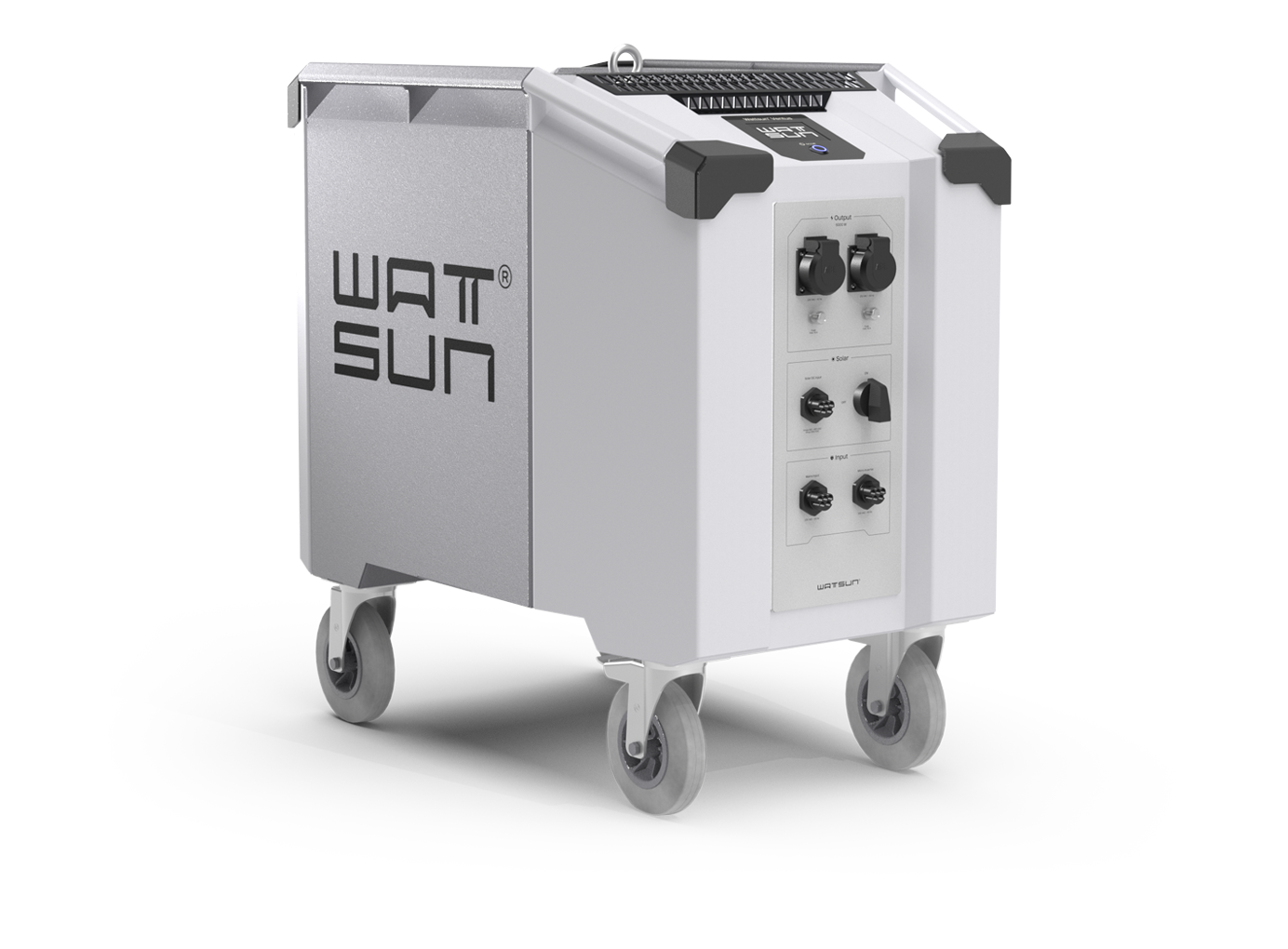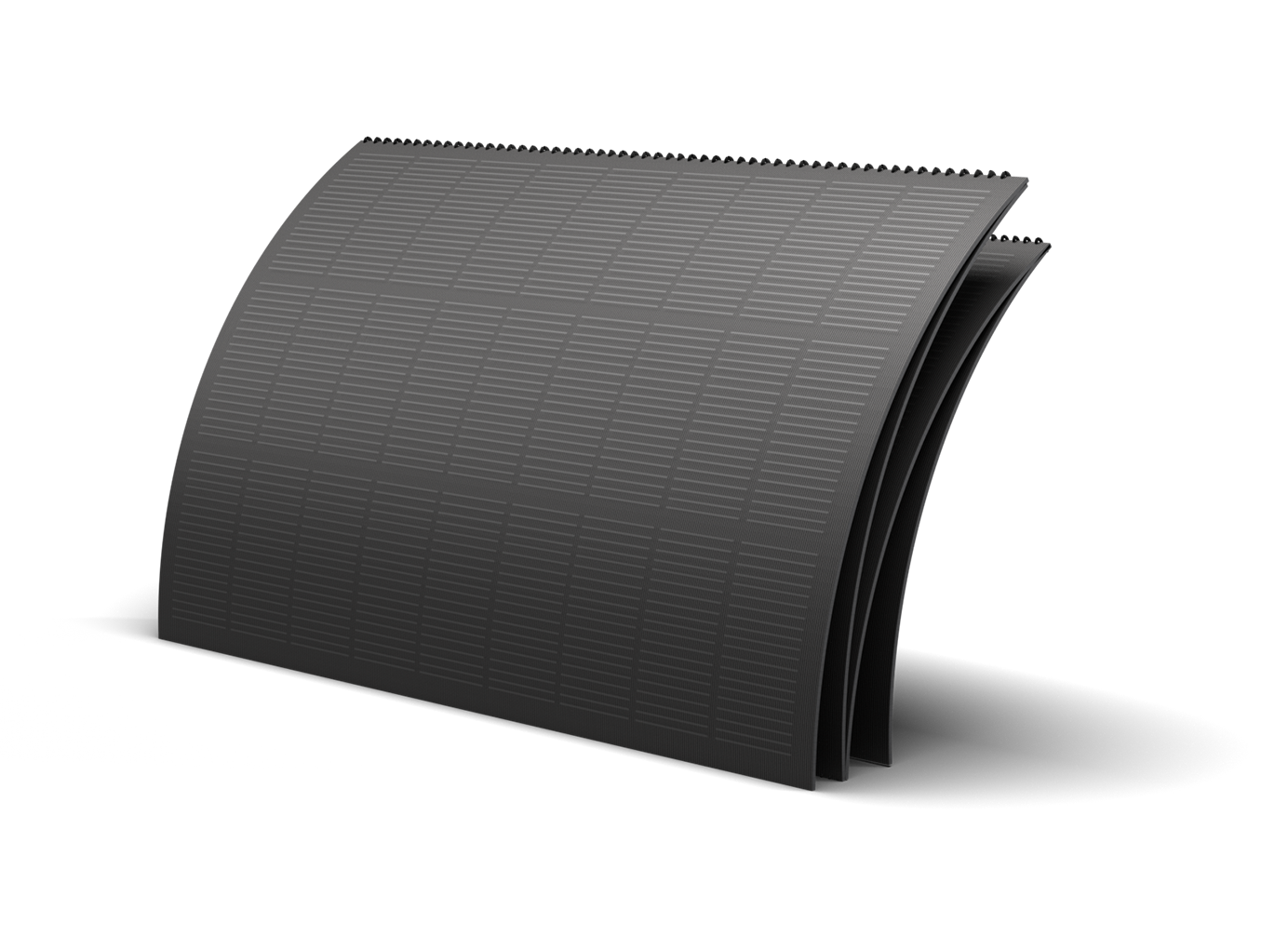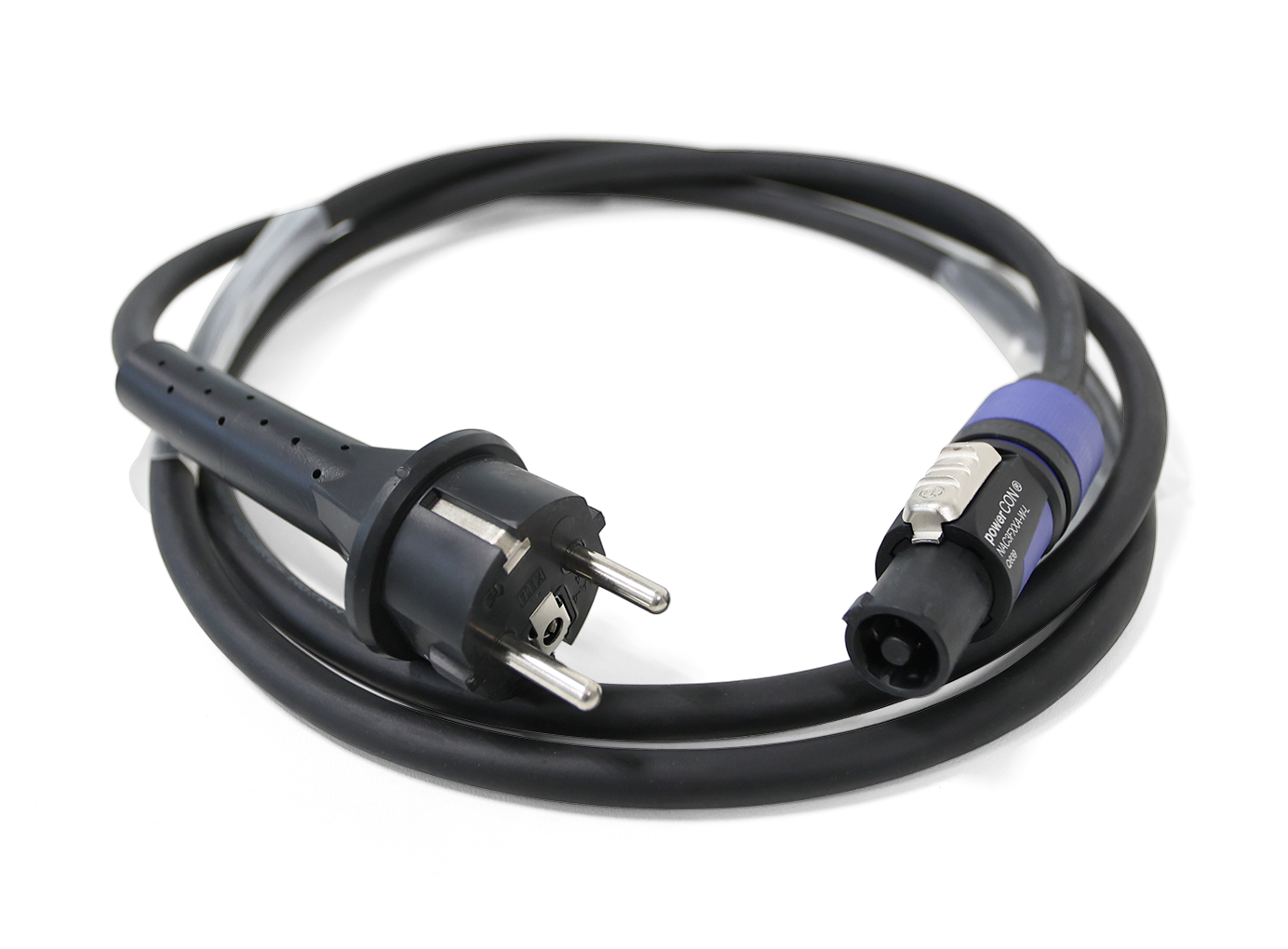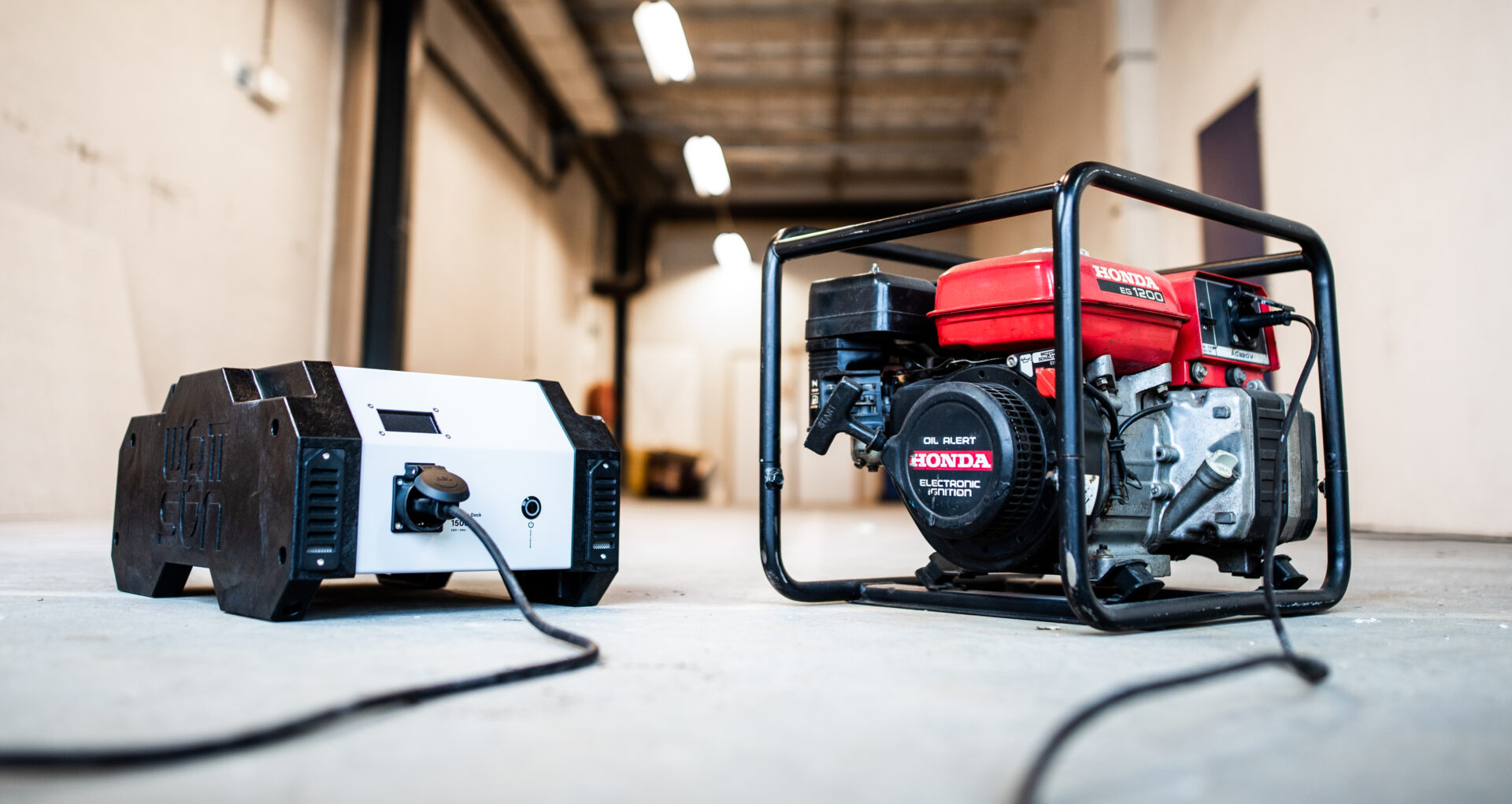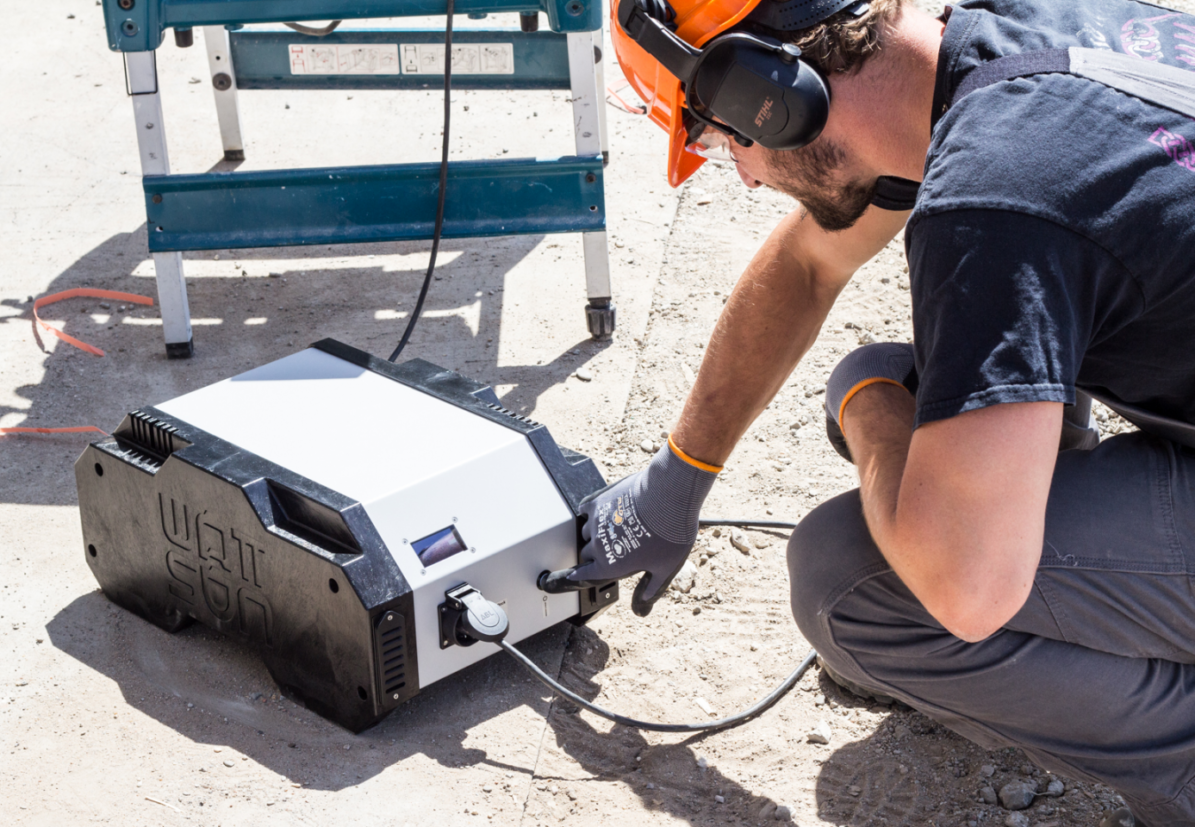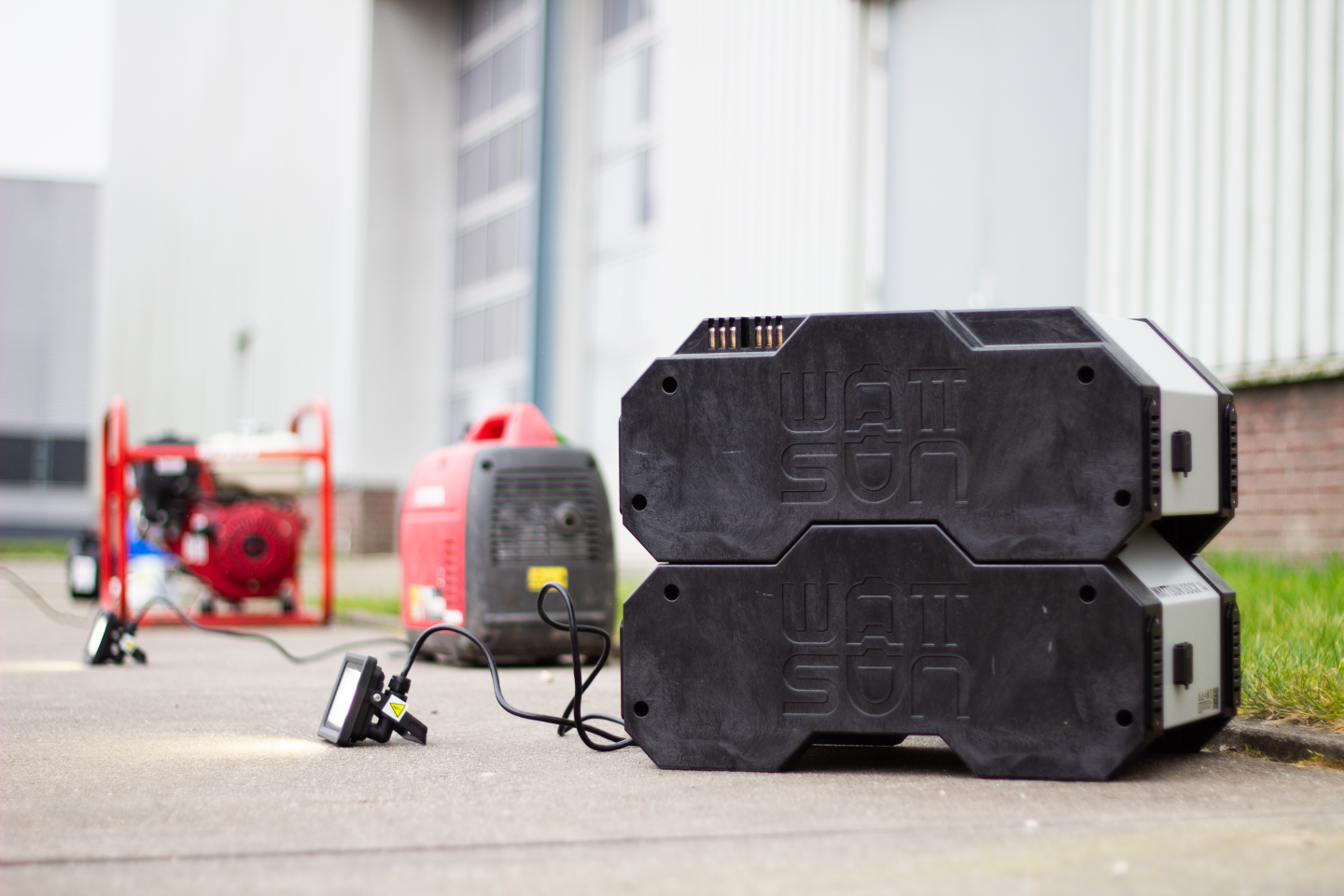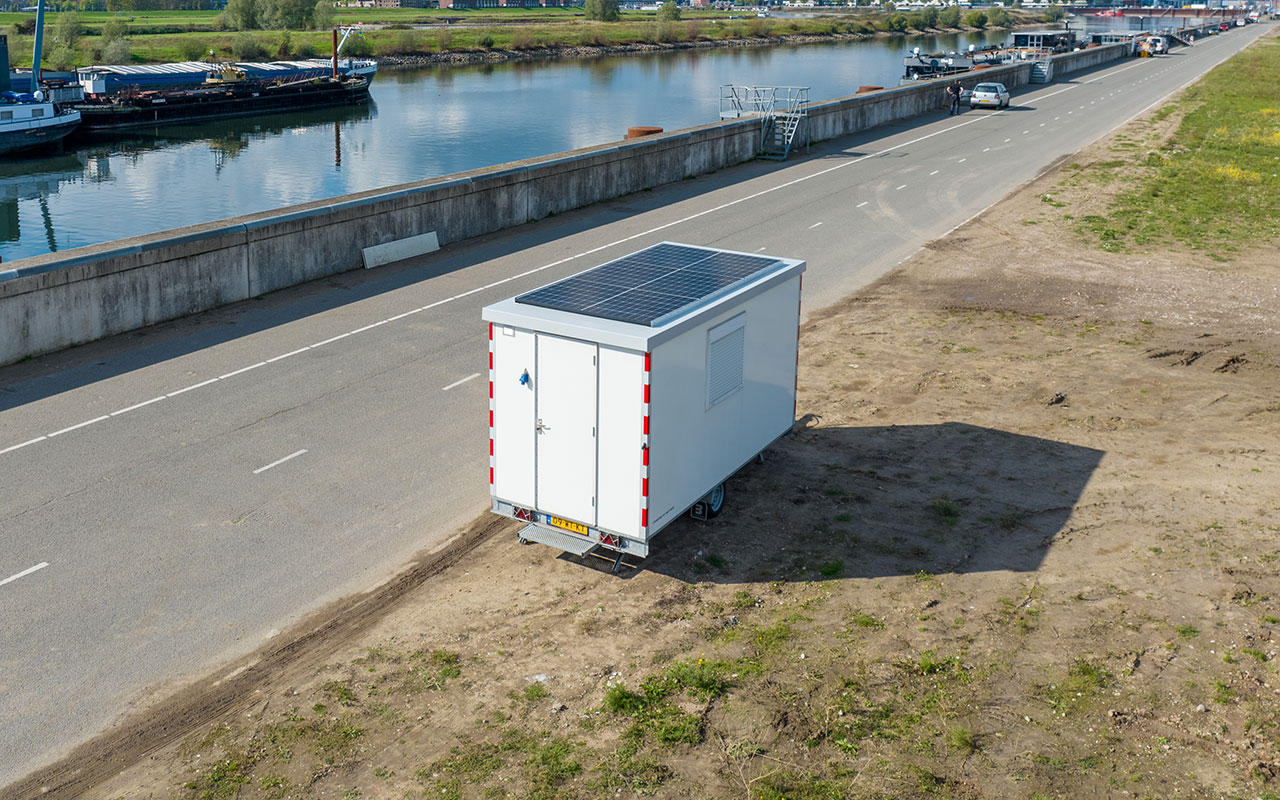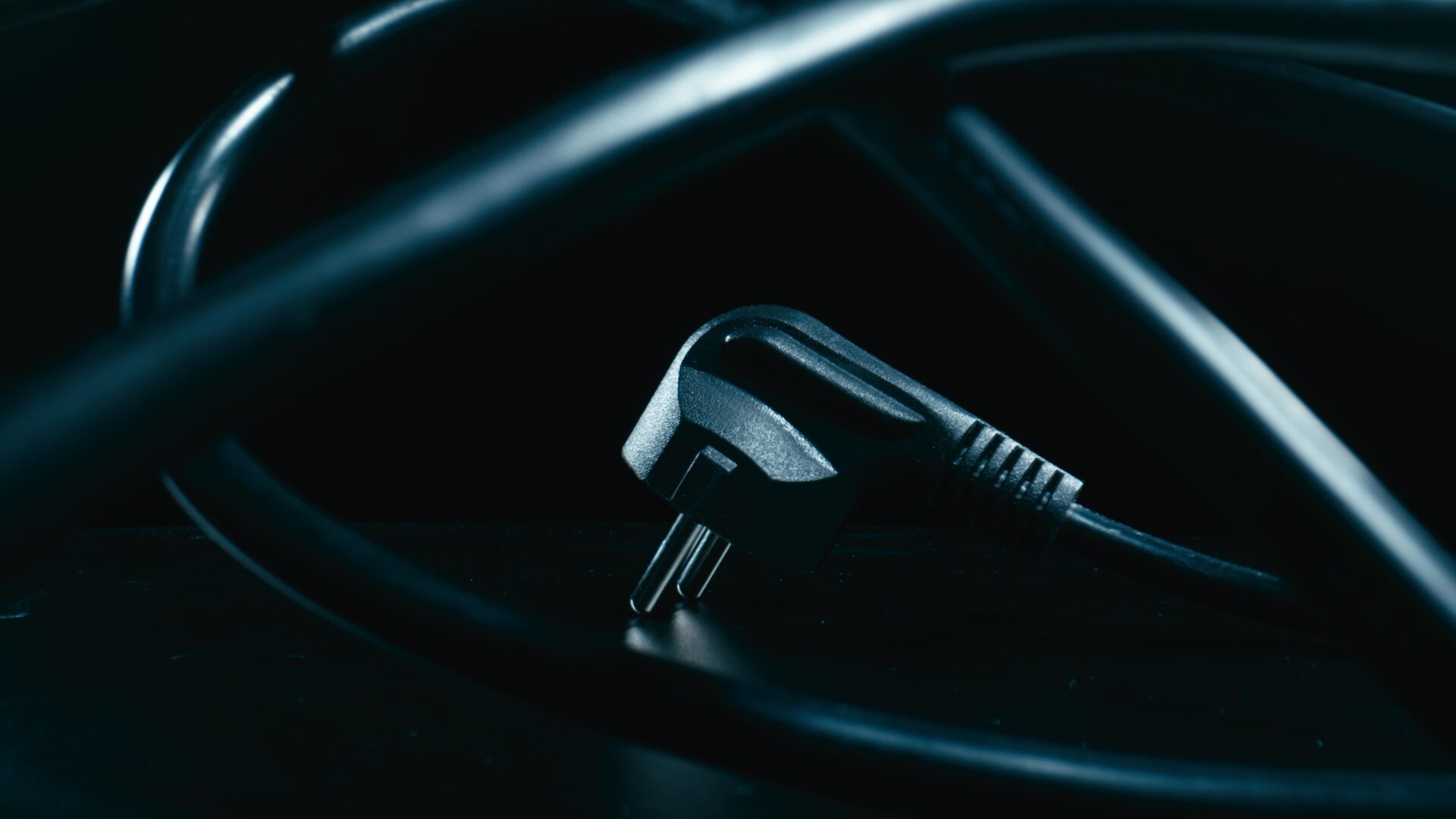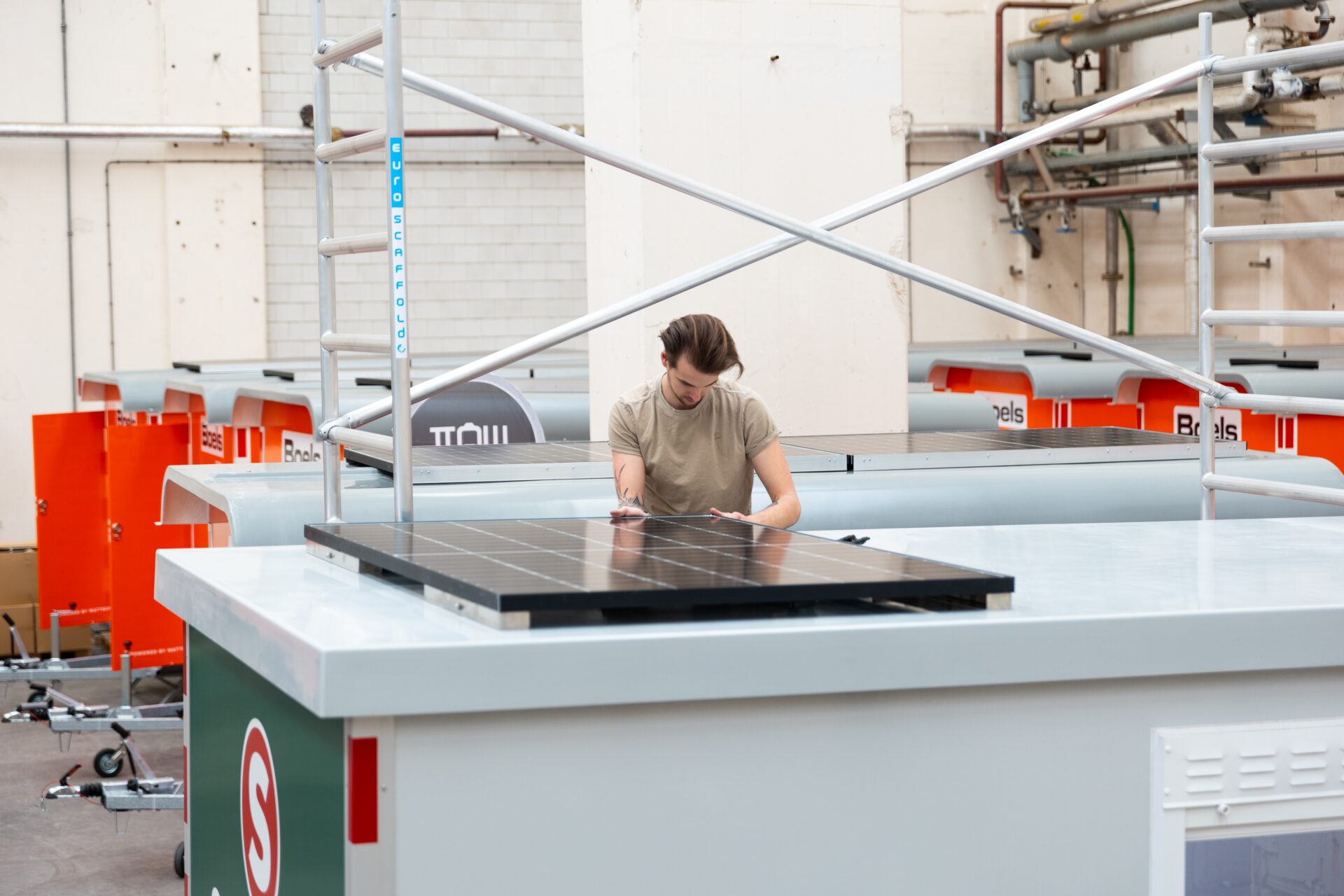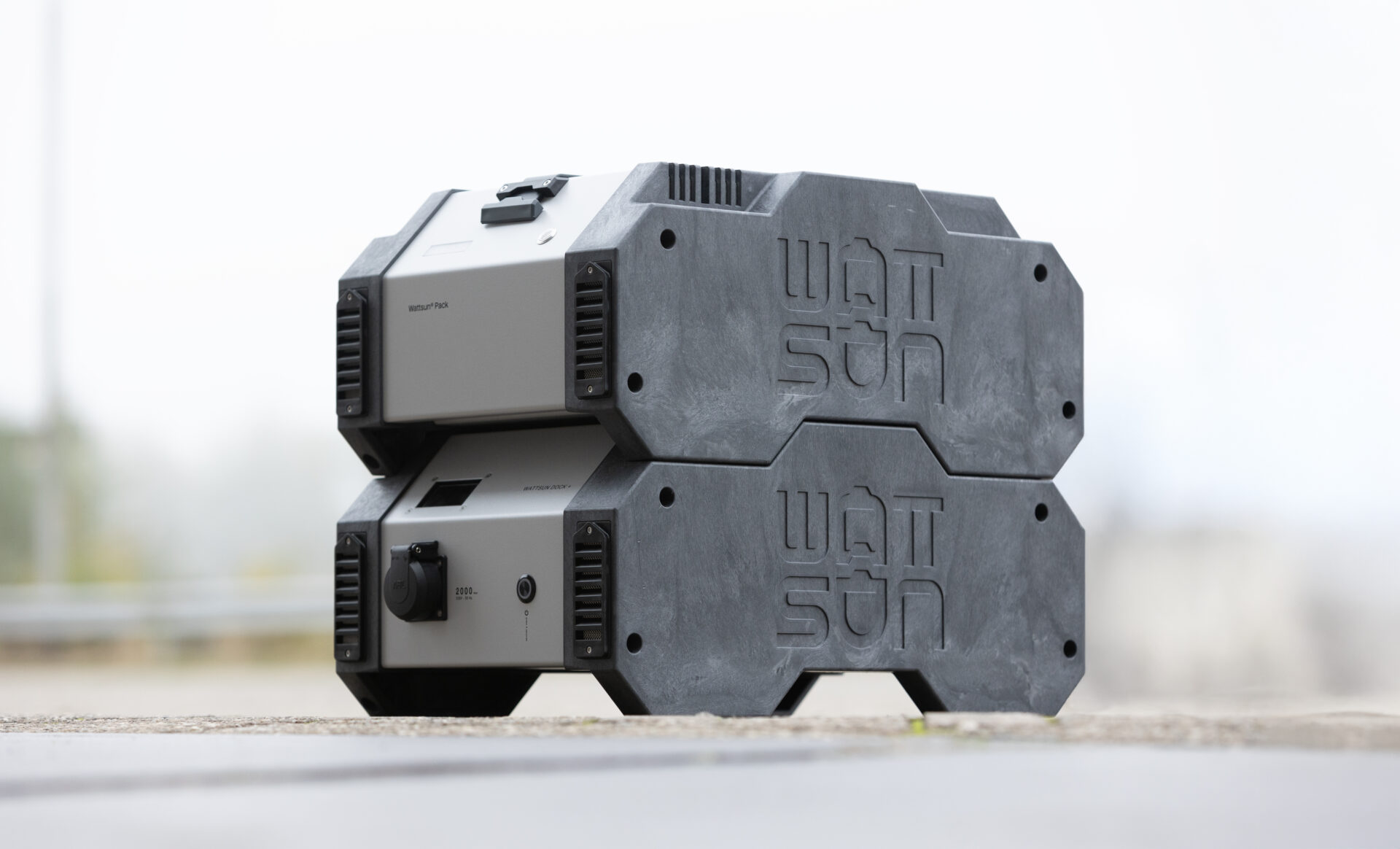The test results have been recorded on video and compared with information from manufacturers and users. If you want to know the differences between the generator you use and the Wattsun battery system, contact one of our specialists, and we will provide you with a customized calculation.
In the first part of this blog, we will look at the differences in ease of use and sustainability between a generator and a battery system. In part 2 of our blog, coming soon, we will delve deeper into cost savings.
The difference in ease of use
Both the generator and the Wattsun battery system are highly suitable for on-site use. Both provide 230 volts and are portable. A generator is a device that produces electricity by converting fossil fuels such as diesel and gasoline into power through a combustion engine. The Wattsun is a lithium-ion battery system that stores electricity for later use, ensuring you always have power when you need it.
Starting a generator is not easy. Firstly, the generator must be placed on a stable, horizontal surface, as tilting it too much can cause problems. Before the generator can be used, the oil level and gasoline level must be checked. Then the process of starting the engine begins, involving several steps: first, open the gasoline tap, turn the choke, switch the engine switch to ON, gently pull the recoil starter, and finally, as the engine starts to warm up, gradually close the choke.
Check the manual for a generator: it is filled with warning signs, there is a risk of burns, and the sequence of actions is crucial. In short, a time-consuming task and a hassle for both beginners and experienced users. Additionally, the generator is a bulky and heavy device. A small generator can easily weigh 43 kg! This makes installing your power source a heavy task, almost impossible to do alone.
The Wattsun battery system is a complete solution. Plug & play. As a user, you simply turn on the battery system by holding down the on/off button briefly. Plug your electric device into the Wattsun’s socket, and you have power immediately. The Wattsun is designed so that a module weighs no more than 17 kg. This makes the product quick and easy to move and usable anywhere.

